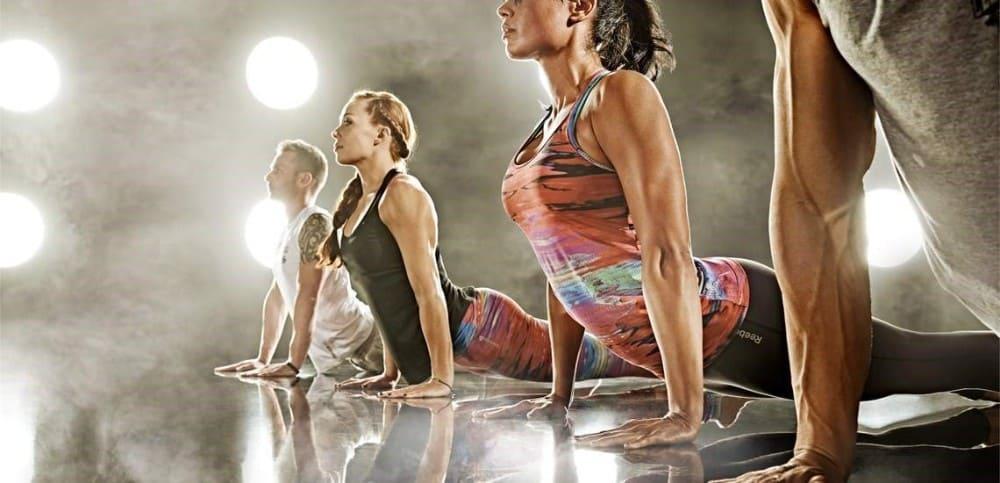Welcome to the world of fitness and body awareness! In this beginner's guide, we delve into proprioception exercises—a key component in enhancing balance, coordination, and overall body control.
Whether you're a fitness enthusiast, an athlete, or someone on a wellness journey, understanding and incorporating proprioceptive activities can unlock a myriad of benefits. Join us as we explore the basics and unveil the secrets to a more balanced and confident you.
Before we get started, it's important to tailor proprioceptive exercises to individual needs and abilities. Whether used for rehabilitation, sports training, or general fitness, incorporating these exercises into a well-rounded fitness routine can contribute to a more functional and resilient body.
Individuals with specific health conditions or injuries should consult with a healthcare professional or a qualified fitness instructor before starting a proprioceptive training program.
What are Proprioceptive Exercises?
Proprioceptive exercises are activities that focus on enhancing proprioception, which is the body's ability to sense its position in space and control its movements.
Proprioception involves integrating information from sensory receptors in the muscles, joints, and other tissues to provide a sense of body awareness and spatial orientation.
These exercises are particularly beneficial for improving balance, coordination, and overall body control. They are commonly used in rehabilitation programs, sports training, and general fitness.
Ankle Proprioception Exercises
Ankle proprioception exercises are designed to improve the awareness, strength, and stability of the ankle joint, reducing the risk of injuries and enhancing overall lower limb function. Here are some effective ankle proprioception exercises:
-
Single Leg Balance:
-
Stand on one leg and maintain your balance for 30 seconds to a minute. Gradually increase the duration as your stability improves.
-
Heel-to-Toe Walk:
-
Walk in a straight line, placing the heel of one foot directly in front of the toes of the other foot with each step. This challenges ankle stability and promotes balance.
-
Ankle Circles:
-
Lift one foot off the ground and draw circles with your toes, first clockwise and then counterclockwise. Perform this exercise in both directions for each ankle.
-
Calf Raises on an Incline:
-
Stand on a slightly elevated surface (such as a step) with your heels hanging off the edge. Rise onto your toes, then lower your heels below the level of the step to stretch your calves.
-
Resisted Dorsiflexion:
-
Sit on the floor with a resistance band looped around a fixed point and the top of your foot. Pull your toes towards you against the resistance, working on dorsiflexion.
Proprioception Shoulder Exercises
Proprioception shoulder exercises focus on enhancing awareness, stability, and control of the shoulder joint. These exercises can be beneficial for improving posture, reducing the risk of shoulder injuries, and enhancing overall upper body function. Here are some effective proprioception shoulder exercises:
-
Scapular Retraction and Protraction:
-
While seated or standing, squeeze your shoulder blades together (scapular retraction) and then push them apart (scapular protraction). Repeat in a controlled manner.
-
Shoulder Circles:
-
Rotate your shoulders in circular motions, first clockwise and then counterclockwise. Focus on smooth, controlled movements to engage the muscles around the shoulder joint.
-
Resistance Band External Rotation:
-
Attach a resistance band to a fixed point at shoulder height. Hold the band with your hand at your side and rotate your arm outward, keeping your elbow close to your body.
-
Wall Angels:
-
Stand with your back against a wall and your arms at your sides. Slowly raise your arms overhead, maintaining contact with the wall, and then lower them back down.
-
Body Blade Exercises:
-
Use a body blade or oscillating resistance tool to perform controlled shoulder movements. This challenges the muscles involved in stabilisation.
Knee Proprioception Exercises
-
Single Leg Balance:
-
Stand on one leg and maintain balance for 30 seconds to a minute. Progress by closing your eyes or standing on an unstable surface, like a foam pad.
-
-
Lateral Step-Ups:
-
Step laterally onto a sturdy bench or platform, focusing on controlled movements. Alternate legs and ensure proper alignment of the knee over the ankle.
-
Mini Squats:
-
Perform shallow squats with a focus on controlled descent and ascent. Keep the movements slow and deliberate to engage the muscles around the knee.
-
Balancing on a Pillow:
-
Stand on a pillow or soft surface, lifting one foot slightly off the ground. Maintain balance and switch legs after a set period.
-
Single Leg Deadlifts:
-
Hinge at the hips and lift one leg straight back while reaching forward with the opposite hand. This exercise challenges balance and strengthens the muscles around the knee.
Get Fit With Village Gym
Elevate your fitness journey at Village Gym, where cutting-edge equipment and world-class facilities redefine the workout experience. Immerse yourself in a comprehensive range of cardio machines, premium strength training equipment, and dedicated functional training areas designed to cater to all fitness levels. Engage in invigorating group classes led by certified instructors, and discover the ultimate post-workout relaxation in our spa-like facilities featuring saunas, steam rooms, and whirlpools.
Experience personalised training programs guided by expert trainers, and embrace tech-driven fitness solutions that provide real-time workout data and interactive features. At Village Gym, we are committed to your holistic well-being, offering a sanctuary where fitness meets relaxation. Join our community, and let's start on a journey to a healthier, stronger, and more vibrant you. Your path to wellness starts here.
Learn About Village Gym Fitness Classes for Proprioceptive Exercises
Elevate your fitness journey at Village Gym with our diverse and dynamic range of expert-led classes. From high-energy cycle sessions to soul-soothing yoga, our classes cater to all fitness levels, creating a motivational and inclusive community.
Join us for an engaging and effective workout experience, where variety, innovation, and a supportive fitness community converge. Transform your fitness routine at Village Gym with our Village Advance Plan and achieve your health and wellness goals in a vibrant atmosphere.
FAQs About Proprioceptive Exercises
What is an example of proprioceptive function?
An example of a proprioceptive function is closing your eyes and accurately touching your nose with your finger. Proprioception allows your body to sense the relative position of body parts and execute coordinated movements without relying on visual input, showcasing the body's inherent spatial awareness.
What causes poor proprioception?
Poor proprioception can result from various factors, including neurological conditions like multiple sclerosis, joint injuries or disorders such as arthritis, muscle weakness or imbalances, ageing, foot problems, vestibular disorders, genetic factors, certain medications, and substance abuse.
How do I know if I have bad proprioception?
Signs of poor proprioception include difficulty with balance, frequent trips or falls, clumsiness, inconsistent movements, joint pain, trouble with fine motor skills, an unstable gait, reduced athletic performance, challenges in sports or physical activities, and a diminished awareness of body position.
If you notice these signs, consulting with a healthcare professional or physical therapist can help assess and address potential issues with proprioception.
Does proprioception decrease with age?
Yes, proprioception tends to decrease with age. As individuals age, several factors contribute to a decline in proprioceptive abilities such as changes to the nervous system function and a reduction in the sensory receptors.
How long does it take to improve proprioception?
The time it takes to improve proprioception can vary widely among individuals and depends on several factors, including the severity of any existing issues, the consistency of training, and the type of exercises performed. Generally, improvements in proprioception can be noticed with regular and targeted training over a period of weeks to months.



